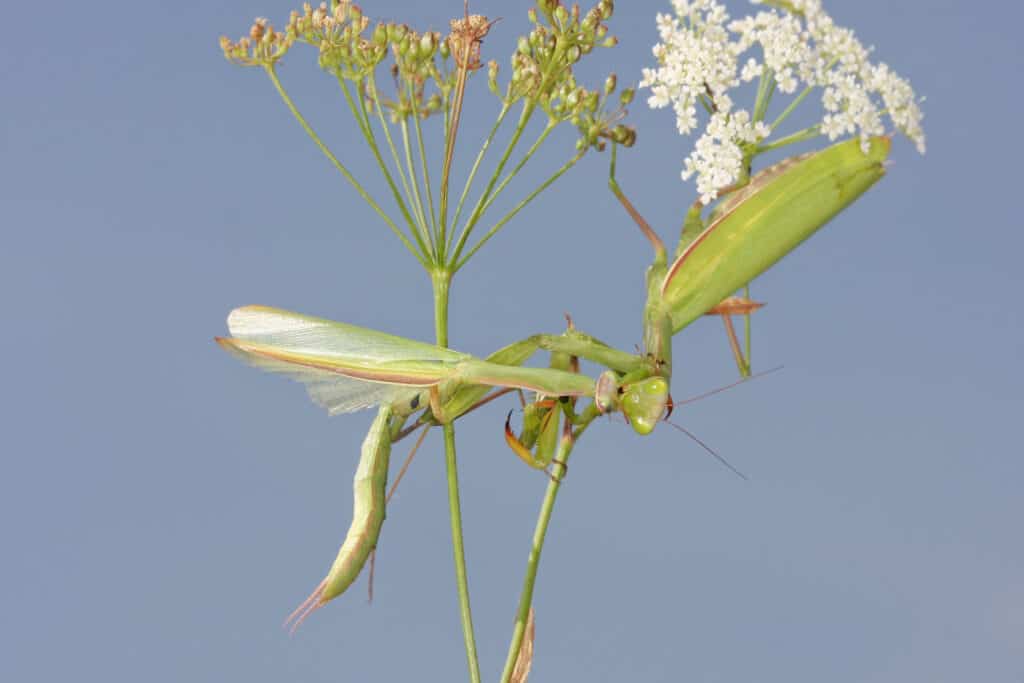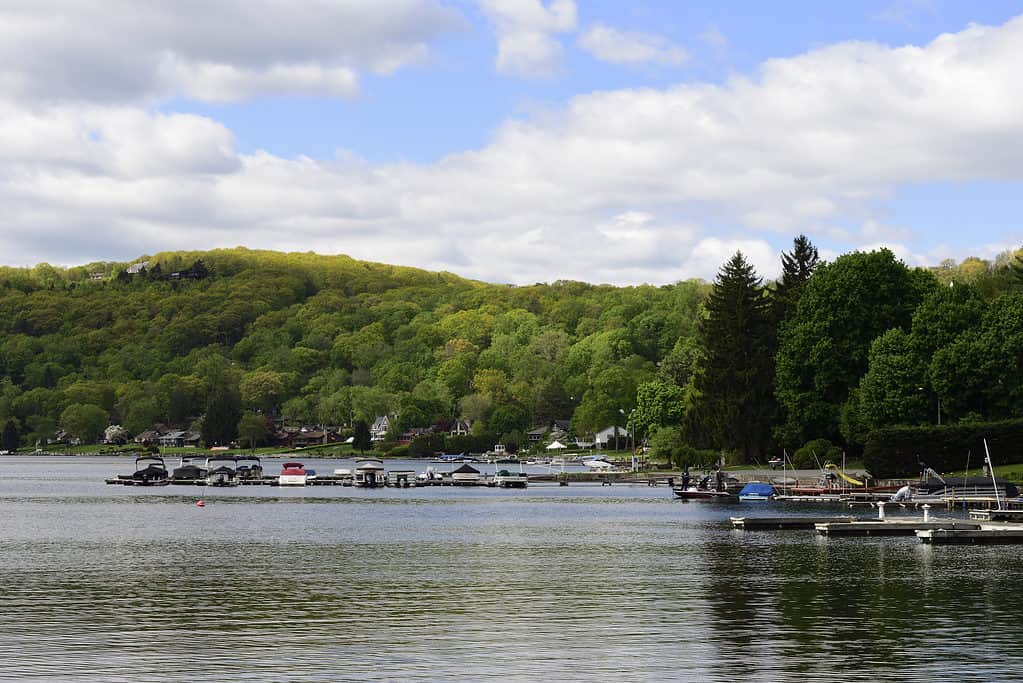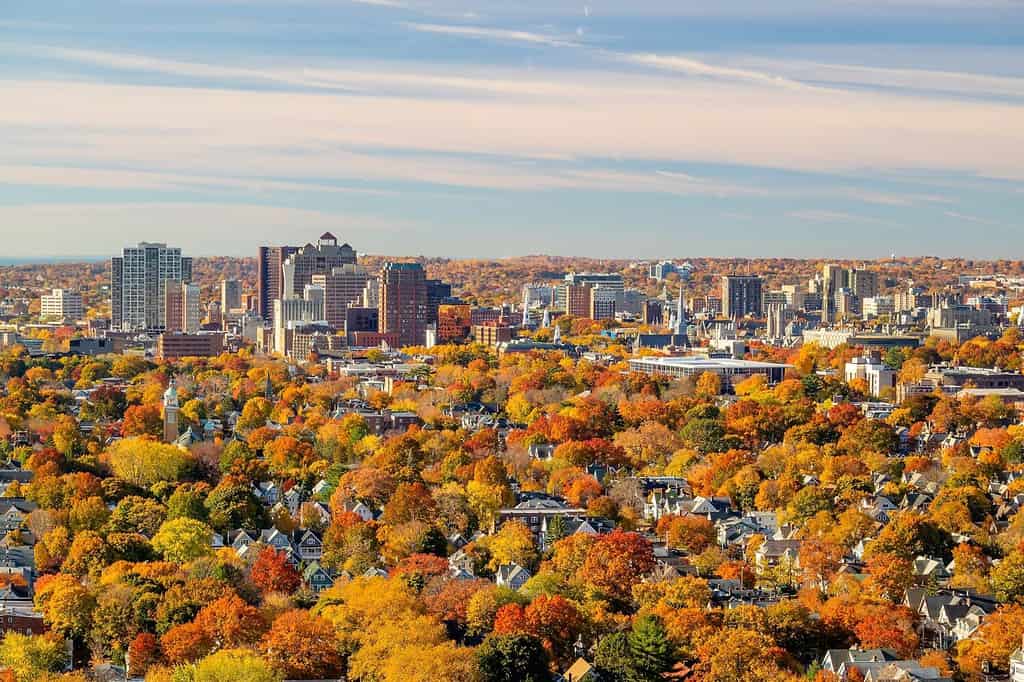Connecticut is one of the smallest states but also one of the most populated. It was one of the original U.S. Colonies and achieved statehood early on. But there’s much more that makes Connecticut the unique state that it is. Keep reading to learn all about the Constitution State.
1. It Was One of the First States

Connecticut is home to Fort Griswold Battlefield State Park.
©Tricia Toms/iStock via Getty Images
Connecticut was the 5th state to achieve statehood when it joined the forming country of America in 1788. It hasn’t changed much since first joining, as its boundaries were only ratified once as a slight change on the Connecticut/Massachusetts border. It’s a great place to visit because there is still so much history from early America like Fort Griswold and Nathan Hale’s Schoolhouse.
2. It’s Nicknamed the “Constitution State”
Did you realize that there was a constitution that was written before the actual U.S. Constitution? It was called the Fundamental Orders, and it was a document that was very similar to what the actual Constitution would look like. It described the independence and practices of a democratic government. The Fundamental Orders were written and adopted in 1639 by the Connecticut Colony. Then, 320 years later, the Connecticut General Assembly voted, officially designating Connecticut as the “Constitution State” in 1959.
3. The First American Dictionary Was Published in Connecticut

Noah Webster created not one, but two American dictionaries, which were the first of their time.
©Vladimir Nikulin/iStock via Getty Images
Noah Webster was the first person to publish an American dictionary, called A Compendious Dictionary of the English Language. He published the 5,000-word volume in 1806 on 400 pages. It was brief but detailed; portable, but large enough for anyone to read. The new ‘American’ dictionary became a big hit.
As soon as it was published, Webster started working on his next project. His next venture, An American Dictionary of the English Language, took 18 years of hard work to complete. It featured 70,000 words inside two thick volumes which were pretty expensive to print at the time. It took a bit longer for the new dictionary to catch on because copies cost $20 to print.
4. Connecticut Is Also Called the “Nutmeg State”

The Nutmeg State doesn’t sell or grow nutmeg at all!
©oksix/ via Getty Images
No, Connecticut is not a producer or exporter of nutmeg, so why is it called the Nutmeg State? Interestingly enough, it doesn’t come from selling the spice, at least, not in the way you’d expect. The nickname comes from the history of Connecticut’s early inhabitants. It was said in George Earlie Shankle’s book State Names, Flags, Seals, Songs, Birds, Flowers, and Other Symbols that these first folks were “so ingenious and shrewd that they were able to make and sell wooden nutmegs”. While there isn’t any real proof that the selling of wooden nutmegs actually happened, it must have been believable to citizens, because the nickname caught on and stuck around.
5. The State Is Named After The Connecticut River

The beautiful Connecticut River cuts almost directly through the center of the state.
©Joshua Lehew/Shutterstock.com
The word “Connecticut” comes from the Algonquian word quinetucket, which roughly means “beside the long river”. The river refers to the long, Connecticut River that flows through the center of the state. It was called that by the Native American tribes that lived in the area, and the name was taken and used by the French when they inhabited the land.
6. It’s Also Called The “Provisions State”
During the Revolutionary War, Connecticut provided a plentiful amount of soldiers, food, and other supplies to the Continental Army. Their generous nature earned them their nickname of “Provisions State”.
7. The State’s Official Insect Is The Praying Mantis

Praying mantises are native to parts of Europe, Asia, and
Africa
and have migrated to the U.S.
©Geza Farkas/Shutterstock.com
Despite the fact that praying mantises are not native to the state, they were selected as Connecticut’s state insect in 1977. That’s because praying mantises are beneficial to farmers and they help with biological control. They are also a representation of the value and importance of nature as a whole.
8. The Largest Lake In Connecticut Is Over 8 Miles Of Water

Lake Candlewood is over 8 square miles.
©tmphoto98/Shutterstock.com
The largest lake in the state is Lake Candlewood, which spans Brookfield, New Fairfield, New Milford, and Sherman. It’s 8.4 square miles in total and home to some very expensive real estate. That may be because it’s the largest lake within 60 miles of New York City. Take one look at those gorgeous waterfront views, and you’ll agree that they’re worth the money.
9. Connecticut Was Home to the First Lollipop

George Smith of New Haven is credited with the invention of the first lollipop.
©5second/iStock via Getty Images
A resident of New Haven named George Smith is credited with the invention of the lollipop. He started making them in 1908, and they instantly caught on. Lollipops were quickly mass-produced, so it was difficult for Smith to gain a trademark of the name. However, his efforts won out and in 1931 Smith was given the trademark to the name “lollipop”.
10. Connecticut Is The 3rd-Smallest State

New Haven is the second-highest populated city in the state.
©f11photo/Shutterstock.com
You may not realize that Connecticut has only 5,543 square miles of total area because there are so many residents. Connecticut is a very small state with a pretty large population. In fact, the state has the 6th-highest population density in the U.S. Its high population density is mainly because it borders New York and nearly touches New York City. The three highest-populated cities in Connecticut — Bridgeport, New Haven, and Stamford — are all in the southwest corner of the state.
11. The First Nuclear Submarine Was Built In Connecticut
The first nuclear-powered submarine was built in 1952 and launched in 1954. It was built by the Electric Boat Company in Groton. Not only was the USS Nautilus the first nuclear submarine, but it was also the first submarine to travel to the North Pole fully submerged. Two years after its decommissioning in 1980, the submarine was designated a National Historic Landmark. You can view the vessel in the Submarine Force Library and Museum in Groton.
12. Connecticut Is Credited with the First Phonebook
The world’s first phonebook, or telephone directory, was published in New Haven in 1878. It was originally advertised to the public as a paid service that cost $1.50 per month for subscribers. The directory was just a piece of cardboard with 50 names for residents and businesses in New Haven. It didn’t even list their numbers! You’d have to call the operator to ask. However, since the book came out just two years after the invention of the telephone, it wasn’t too bad!
13. The State Animal Is the Sperm Whale
Connecticut selected the sperm whale to be its state animal in 1975. The state chose the sperm whale in part because it’s an endangered species. The General Assembly believed choosing the whale might help raise awareness of the species and its dwindling population.

The sperm whale is the state animal of Connecticut, though, like praying mantises, they aren’t indigenous to the state.
©wildestanimal/Shutterstock.com
14. ESPN Has Its Roots in Connecticut
The international sports broadcasting service, ESPN, got its start in Plainville in 1978. Not long after renting that office, the station’s founders, Bill Rasmussen and Ed Eagan, moved the business to its current location in Bristol. The station began broadcasting in 1979 what would become SportsCenter.
15. It’s Home to the Oldest Steam-Powered Cider Mill in the Nation

Head to B. F. Clyde’s Cider Mill for delicious donuts and fresh cider.
©Kristin Utzinger/iStock via Getty Images
The oldest steam-powered cider mill in America lies in Mystic, where it is still in operation today. Connecticut resident Benjamin F. Clyde started producing the cider in 1881, and it continues to produce to this day. It was designated a National Historic Mechanical Engineering Landmark in 1994. It’s a great place to visit to try homemade apple cider donuts and fresh cider, and also to check out the history.
16. It Was the First State with a Speed Limit
Connecticut was the first U.S. state to enact a speed limit. The state established a speed limit of 12 miles per hour in the city and 15 miles per hour in the country. They passed the law in 1901, which also governed how automobile drivers should act around horses.
The photo featured at the top of this post is © SevenMaps/Shutterstock.com
Thank you for reading! Have some feedback for us? Contact the AZ Animals editorial team.







